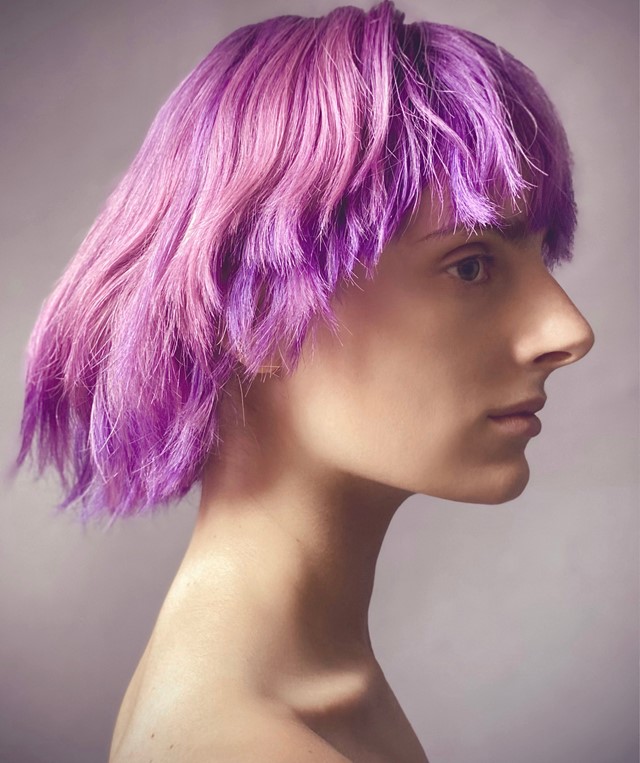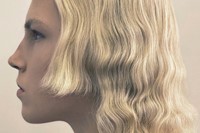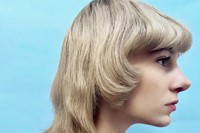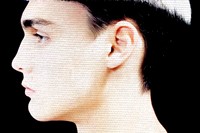As Guido Palau’s latest book #HAIRTESTS is released, he talks through the shoots and shows that made him
With an illustrious career that spans nearly three decades, anyone would be hard-pressed to pick out five moments that stood out as life-defining. For Guido Palau, this task was near impossible, as the hairstylist’s work has defined eras, shaped trends and birthed some of the most enduring fashion imagery produced in the 20th and 21st centuries, collaborating with the likes of Kate Moss, Steven Meisel and Alexander McQueen. But AnOther has asked him to do just that.
Guido (he is usually referred to by a mononym, such is his status) has just released a new book #HAIRTESTS, that he refers to as a “scrapbook of ideas”. It brings the shots that he would often take backstage at shows, and post to his Instagram, to the printed page. “If you’re working with a designer, once the look has been signed off, I always take a picture so I’ve got a reference to show my team,” he tells me on the phone from New York. “I would do them in a particular way: I’d do a profile, and there’d be no headshot. It was very simplistic. I got into doing that, and I’d then post them on my Instagram.”
And it is this instinctive way of working that he shares with us below – from the accidental look he made for Natalia Vodianova in 2005, by piling hairpieces on her head to create a towering and surreal 1960s bouffant, to dying the hair of 40-45 models the morning of a Raf Simons show in 1999.
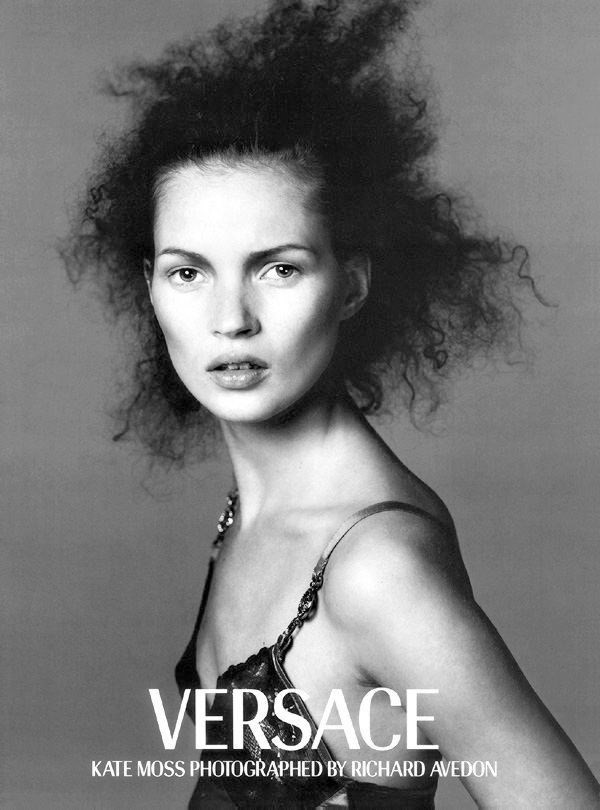
Kate Moss by Richard Avedon, Hair by Guido Palau for Versace A/W 96/97
“Kate had just come out of a contract with Calvin Klein. She was the epitome of the ‘anti-glamour’ aesthetic of the 1990s at that point. Even though she’s an iconic supermodel today, back then she was representing an alternative idea of beauty. After the contract ended with Calvin Klein, Versace picked up on her, and wanted to reinvent her into their kind of model for that time. And so the hair that I did for this campaign was inspired by Italian renaissance pictures, but showing Kate in a very different way. The technique of getting the hair like that was really something. Every day we had to do this set with pins, and I remember she would really not like it. It was pivotal for her career, to cross over into another kind of genre. I had just started working with Versace and with Avedon at the time, who was obviously the ultimate person to collaborate with. It was nerve-racking and you had to bring your A-game at all times. It was a time in fashion where there seemed to be tonnes of money, and I remember being flown to do that job on Concorde. It was all very glamorous, so it sticks in my mind for lots of reasons. It was intimidating but the results were great and I’m very proud of them. It was a moment in my career where it shifted – it went up a gear.”
Kirsten Owen by Steven Meisel, Hair by Guido Palau, Styled by Joe McKenna, Make-up by Diane Kendal for Vogue Italia September 1997
“It was the first time I’d worked with Steven. I flew to New York to do the job and I heard through fax that Steven wanted me to give Kirsten a new haircut. I remember thinking the night before that I couldn’t do it on the day because I’d be too stressed about all the other elements: about working with someone as great as him and Joe Mckenna, and Kirsten was one of the great models of the time. Anyway, we did a very asymmetrical haircut – cut on one side and left on the other – and it was very successful. Steven loved it. It’s something that people often reference still to this day. I think these pictures left a mark on people because they were really of their time. It was the mid-90s, it was when Jil Sander was becoming really prolific in her work; minimalism was in, she was an alternative beauty, and the haircut was something people hadn’t seen before. You can’t underestimate the power of imagery, and how it can affect people.”
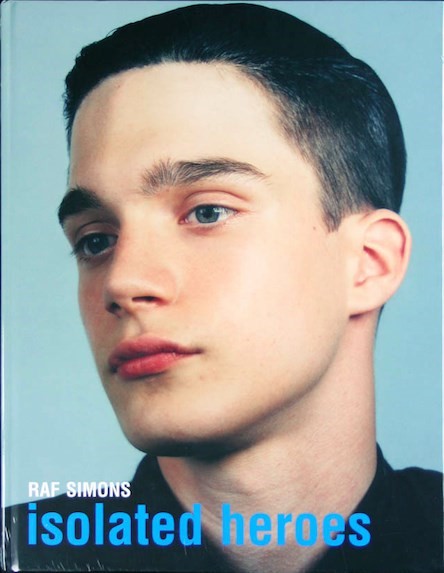
Isolated Heroes, 1999 by Raf Simons and Guido Palau, Photographed by David Sims
“This was a show that I did with Raf Simons in the early days of our work together. Raf did street casting back then and all the models came over, from Belgium to Paris. Me and my team cut and dyed all the hair of around 40 or 45 models on the morning of the show. We dyed them black or bleached them white and the cuts were really graphic and monk-like. Raf was really into rave culture in Belgium, [particularly a movement] called Gabber. It was sort of like hardcore techno, which I wasn’t really aware of at the time. But the hair was inspired by that. David Sims was backstage and he shot the boys, and the images became this book Isolated Heroes, which is now a cult item and quite hard to get hold of. People ask me how that book came about, but it was all very casual. David was there, he set up a background and did these portraits, and that was it. But the imagery feels iconic. It’s another project that I am blessed to have been a part of.”
Natalia Vodianova by Steven Meisel, Hair by Guido Palau, Make-up by Pat McGrath for Vogue Italia, May 2005
“We were breaking for lunch on set, and Natalia was sitting there, and she said, ‘let’s see if we can do a quick hair picture.’ I had all these hair pieces and I just bunged them on top of her head, as she held her denim jacket. I think this encapsulates a 1960s beauty. She was always someone that I loved working with, and we worked a lot together with Steven. Natalia was always great because she would never move when I was doing her hair. I would say ‘OK Natalia, you can’t move! I’ve just got to do this bit … ’ And she really would just sit there, like a statue! With this hair in particular, I think it is so dreamy and sexy and glamorous, but still very cool. I love glamour, and I love punk and I love everything in between, as long as it’s pushed to the extreme. This is pushed to the extreme and you can’t turn away from it. And even question it! ‘Is it too big? What is it?’”
Alexander McQueen’s Plato’s Atlantis, S/S10, Hair by Guido Palau
“McQueen and I had a long working relationship, and a long friendship. McQueen had an instinctive idea that he would impart on the people around him and so the beauty aesthetic for shows always came from him too. He really taught me that when you work with great people who have strong visions of their own and their own idea of beauty, you really learn from them. With McQueen, I learned about the imagery of powerful women steeped in history. He was very exact about the way women looked in his shows. The starting point for the hair for Plato’s Atlantis was based upon the idea of morphing underwater. So we ended up creating these fin-like structures. My reference actually came from the Rolls Royce Spirit of Ecstasy, as it looks like an angel, but combined with an otherworldly aesthetic from McQueen. It was a tricky hairstyle to work out, because we had to make these pads to create the fins and then build the hair over them. To do that in a three-hour window before the show was complex, but I know Lee was very happy with the result, as was I. Unfortunately, it was his last show. It was a great show; the shoes were amazing and he had started working on digital prints for the fabric. There were lots of innovations in that show, and I know he was really proud of that.”
#HAIRTESTS is out now, published by Idea.
